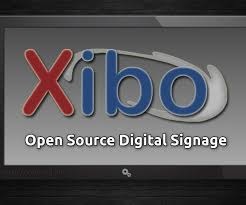What is Internet of Things?
What is Internet of Things?
You've likely heard the phrase "Internet of Things" — or IoT — at some point, but you might also be scratching your head figuring out what it is or what it means.
The IoT refers to the connection of devices (other than typical fare such as computers and smartphones) to the Internet. Cars, kitchen appliances, and even heart monitors can all be connected through the IoT. And as the Internet of Things grows in the next few years, more devices will join that list.
We've compiled a beginner's guide to the IoT to help you navigate the increasingly connected world.
Terms and Basic Definitions
Below, we've provided a glossary defining the Internet of Things:
- Internet of Things: A network of internet-connected objects able to collect and exchange data using embedded sensors.
- Internet of Things device: Any stand-alone internet-connected device that can be monitored and/or controlled from a remote location.
- Internet of Things ecosystem: All the components that enable businesses, governments, and consumers to connect to their IoT devices, including remotes, dashboards, networks, gateways, analytics, data storage, and security.
- Entity: Includes businesses, governments, and consumers.
- Physical layer: The hardware that makes an IoT device, including sensors and networking gear.
- Network layer: Responsible for transmitting the data collected by the physical layer to different devices.
- Application layer: This includes the protocols and interfaces that devices use to identify and communicate with each other.
- Remotes: Enable entities that utilize IoT devices to connect with and control them using a dashboard, such as a mobile application. They include smartphones, tablets, PCs, smartwatches, connected TVs, and nontraditional remotes.
- Dashboard: Displays information about the IoT ecosystem to users and enables them to control their IoT ecosystem. It is generally housed on a remote.
- Analytics: Software systems that analyze the data generated by IoT devices. The analysis can be used for a variety of scenarios, such as predictive maintenance.
- Data storage: Where data from IoT devices is stored.
- Networks: The internet communication layer that enables the entity to communicate with their device, and sometimes enables devices to communicate with each other.
By 2020, more than 24 billion internet-connected devices will be installed globally — that's more than 4 devices for every human on earth.
The Internet of Things first came to us on PCs. Then it moved to smartphones, tablets, smartwatches, and TVs.
But now it's coming to all of our everyday devices that fall under the IoT umbrella.
This IoT revolution has the potential to change our homes, transportation, work, even our cities. But how will we arrive in this new era?
BI Intelligence, Business Insider's premium research service, has developed a slide deck analyzing the growth of internet-connected devices — particularly the Internet of Things (IoT).




Comments